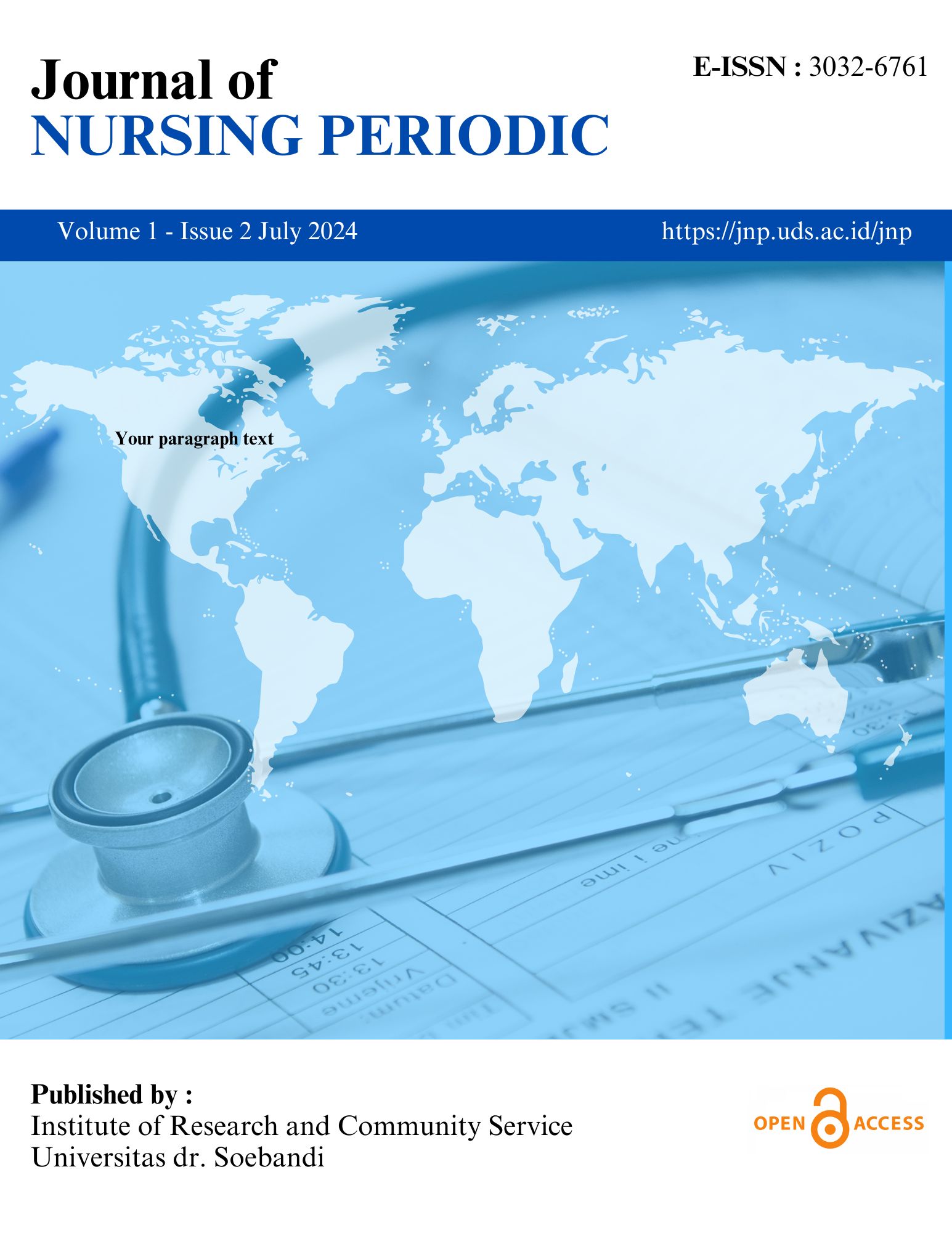THE RELATIONSHIP BETWEEN OXYGEN SATURATION WITH LEVELS ANOREXIA IN DIABETES MELLITUS PATIENTS IN JEMBER
DOI:
https://doi.org/10.36858/jnp.v1i2.22Keywords:
Anorexia Levels, Diabetes Melitus, Oxygen SaturationAbstract
Background: Diabetes mellitus is widely known as a disease that is closely related to food intake, such as carbohydrates / sugar, protein, fat, and excessive energy can be an early risk factor for DM. Common problems in DM patients will experience a strict diet, and are at risk of eating disorders or can be called anorexia. Objective: determine the relationship between oxygen saturation and anorexia levels in DM patients in the jasmine inpatient room of RSD Balung. Research method: the research design used is correlational research with a cross sectional approach. The population of this study is patients suffering from diabetes mellitus in the jasmine inpatient room of RSUD Balung. The research sample of 50 people was taken using non-probability sampling techniques with the Quota sampling method. Datacollection used pulse oximetry analyzers to measure oxygen saturation and SNAQ questionnaires to measure anorexia levels. Uji statistics using the Chi-square test. Results of the analysis: the results of the study of the relationship of oxygen saturation with anorexia levels in DM patients obtained p-values (0.028 α (0.05) with contingency coefficient tests (0.354). Conclusion: there is a low relationship between oxygen saturation and anorexia levels in DM patients in the jasmine inpatient room of RSD Balung. Lack of nutrients will result in the breakdown of oxygen in the blood into fatty acids resulting in diabetic ketoacidosis. Lack of oxygen can also lead to weight loss. The body will be difficult to concentrate because the metabolic process is disrupted due to lack of oxygen supply in the blood that will circulate food throughout the body.




